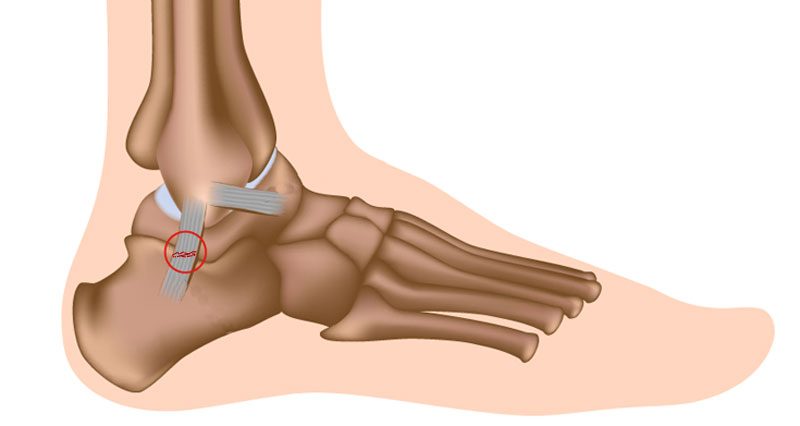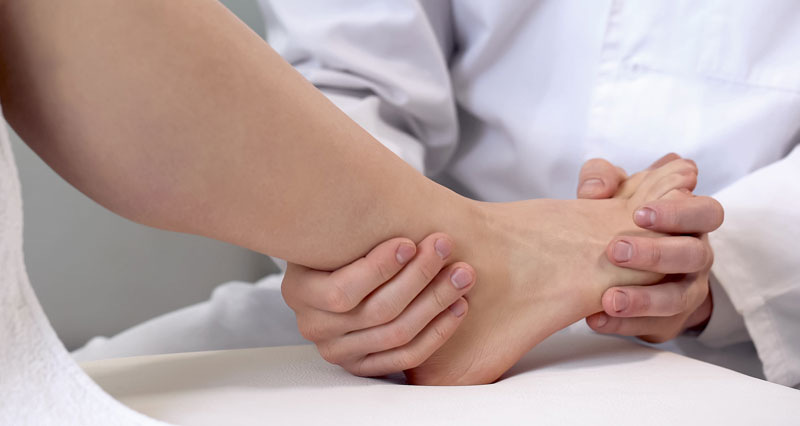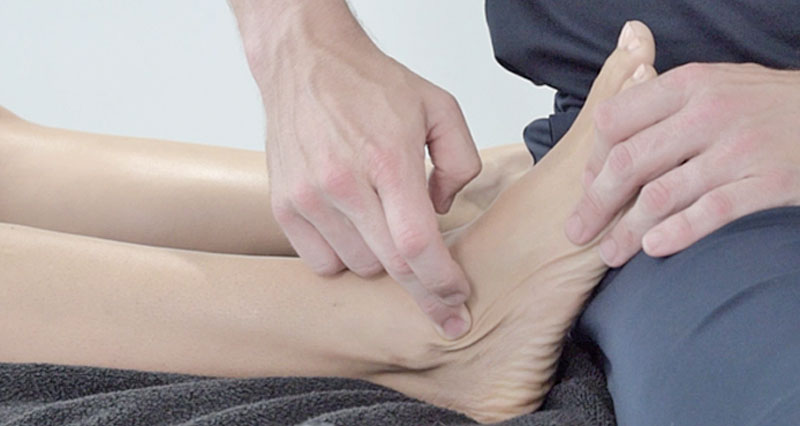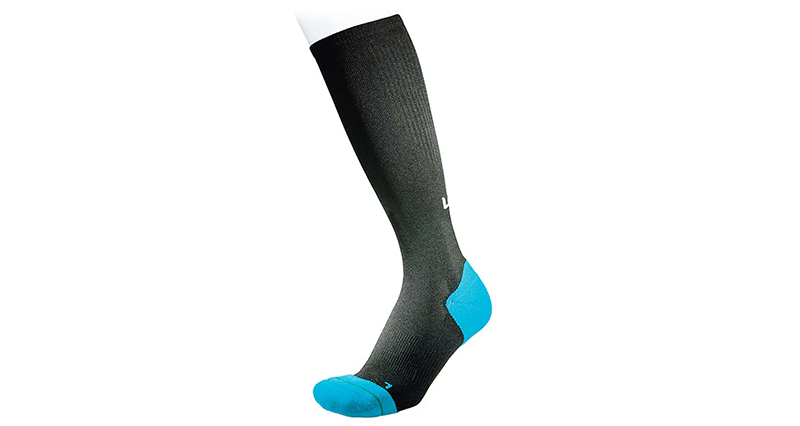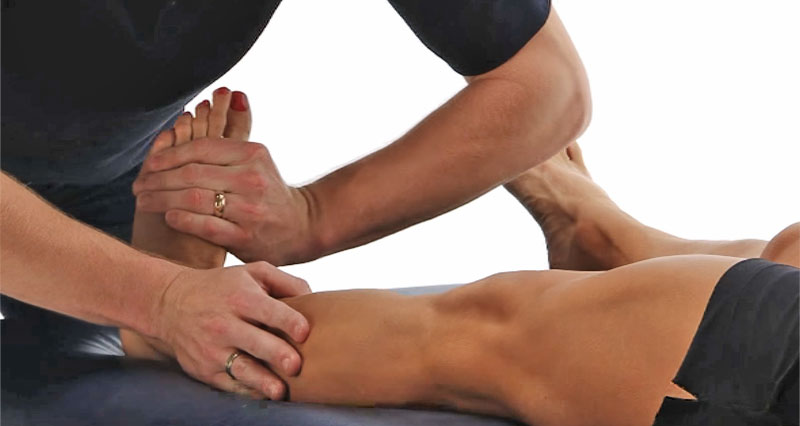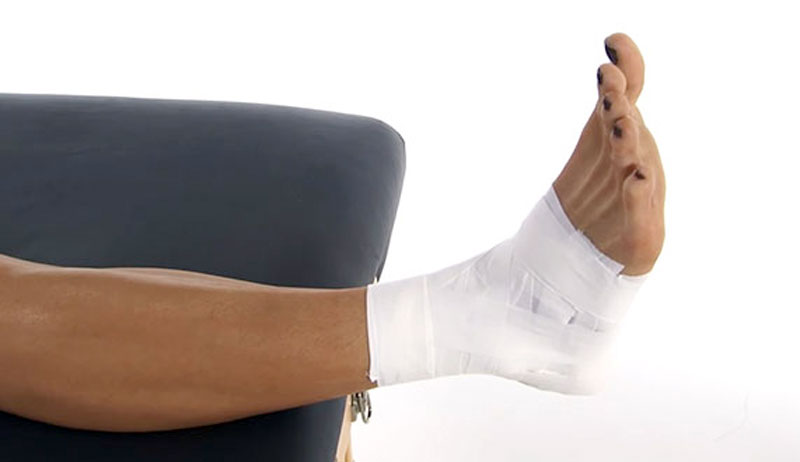A sprained ankle is one of the most common sports injuries. It is simply a injury to any of the ligaments in the ankle, usually on the outside. It is essential to treat your ankle sprain properly to avoid it happening again. Here we explain the symptoms, causes, and treatment for ankle sprains as well as potential complications which are often missed.
Medically reviewed by Dr Chaminda Goonetilleke, 10th Jan. 2022
Sprained ankle symptoms
You often know instantly if you have sprained your ankle. Your foot turns inwards under the weight of your body, causing Instant pain. Other symptoms include:
- Pain throughout the joint, or, specifically on the outside of your ankle.
- Immediate swelling, or, may develop over 24 to 48 hours.
- Bruising.
- Pain on the inside of your ankle if bones are crushed together.
Ankle sprains are grade 1, 2, or 3 depending on how bad they are.
Your doctor/physio will perform a number of assessment tests to help diagnose how bad your injury is. For instance, the talar tilt test and anterior drawer test.
- More on ankle sprain diagnosis
Similar injuries and complications
It is important to rule out other injuries or complications which occur with ankle sprains. These include:
- Avulsion fractures are where the ligament pulls a piece of bone with it.
- Osteochondral Lesions are injuries to the articular cartilage at the ends of bones.
- Ankle fractures can also result from a sprained ankle.
Anatomy
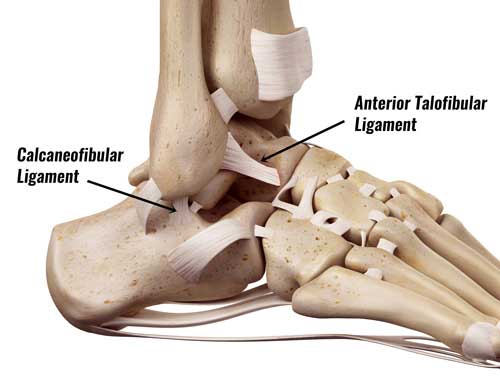
The ankle is supported by a number of ligaments that connect bone to bone. The main ligaments involved in a sprained ankle are the anterior tibiofibular ligament and the calcaneofibular ligaments on the outside of the ankle.
Muscles on the inside and outside of the leg
Inversion ankle sprains vs eversion sprains
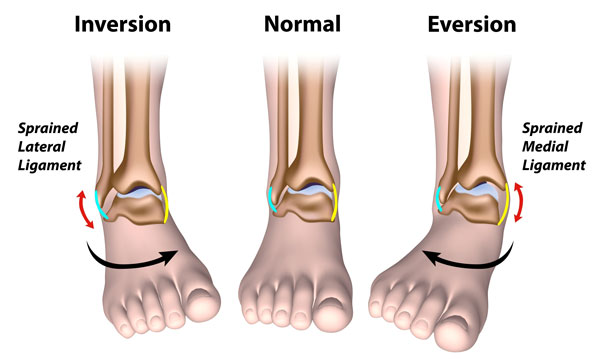
An inversion sprain is the most common. This is where the ankle rolls outwards as the sole of the foot turns inwards. This, therefore, stretches or tears the supporting ligaments on the outside of the ankle.
Eversion sprains are less common and usually occur in
Mild sprains may only damage one of the ligaments whereas a more severe sprain can damage two or more.
- More on Eversion sprains
What causes a sprained ankle?
A number of factors may increase your risk of a sprained ankle:
Poor proprioception
Proprioception is your body’s awareness and ability to judge the position of body parts. If damaged, muscles are less able to detect if your joint is at risk of injury. As a result, poor proprioception is a leading cause of sprains, especially recurrent injuries.
If you start to turn your ankle over but automatically react to prevent it. This is proprioception at work.
- More on proprioception
Inappropriate footwear
Using the wrong type of shoes for your sport or activity can also increase your risk of a sprained ankle. Make sure shoes fit and are suitable.
- More on choosing shoes
Treatment for sprained ankles
Treatment involves immediate first aid PRICE principles (protection, rest, ice, compression, and elevation) followed by a full rehabilitation program.
Cold therapy & compression
Apply ice or cold therapy as soon as possible after injury. This reduces pain, inflammation, and swelling. Do not apply ice directly to the skin as it may burn. Wrap in a wet tea towel, or better still, use a cold therapy compression wrap.
Apply the cold for 10 mins every hour initially, reducing the frequency as your symptoms improve. Elevate your ankle as this reduces swelling by allowing tissue fluids to drain away.
Rest your sprained ankle!
It is important to rest. If you continue to walk or run on an injured ankle you run the risk of it becoming worse. It is much easier to cure a recent injury than it is a long-term chronic one.
Wear an ankle brace
Wear an ankle brace or support to protect the injured ligaments and provide compression.
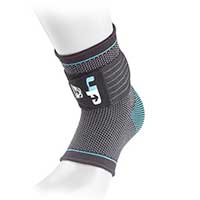
Buy Ankle Supports
Initially, a simple elastic compression sleeve or support is ideal, whilst later in the rehabilitation process, a stronger brace with additional lateral support at the side may help protect the ligaments.
Electrotherapy
A professional therapist may use electrotherapy, such as ultrasound to help relieve pain and reduce swelling. Ultrasound transmits high-frequency sound waves into the tissues for a micro-massage effect.
- More on Electrotherapy
Sprained ankle massage
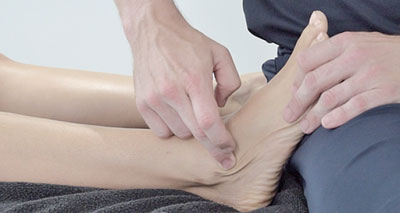
Sports massage helps reduce swelling in the acute stage. Later, cross-friction massage directly to the ligament helps correct scar tissue formation.
Sprained ankle taping
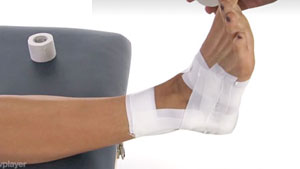
Taping for ankle sprains protects your injured ankle and improves confidence following injury. It supports the damaged tissues in your ankle and activates the surrounding muscles.
- How to tape a sprained ankle
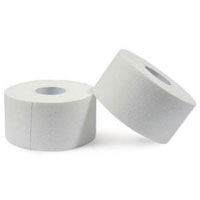
Zinc Ocide Sports Tape
See a sports injury professional
A professional therapist can accurately diagnose your injury and give advice on treatment and rehabilitation. This is essential if you have a severe injury or one that is not responding to treatment.
- More on when to see a doctor
Sprained ankle rehabilitation program
Our ankle sprain rehab program is created by England & British Lions Rugby physio Phil Pask. It is based on what he would do with his elite players but adapted to suit all levels.
It consists of 4 phases and is criteria-based. As a result, you need to reach each phase’s exit criteria before moving on to the next.
We explain the treatment and exercises needed to get you back to full fitness including mobility, activation, movement control, strengthening, and functional exercises.
- Learn more about our Ankle rehabilitation program
- See dislocated ankle
References & further reading
- Cook CE, Hegedus EJ. Orthopedic Physical Examination Tests. 2nd ed. Upper Saddle River, New Jersey: Pearson Education Inc, 2013.
- Fong DT, Hong Y, Chan LK, et al. A systematic review on an ankle injury and ankle sprain in sports. Sports Med 2007;37(1):73–94.
- Dimmick S, Kennedy D, Daunt N. Evaluation of thickness and appearance of anterior talofibular and calcaneofibular ligaments in normal versus abnormal ankles with MRI. J Med Imaging Radiat Oncol 2008;52(6):559–63.
